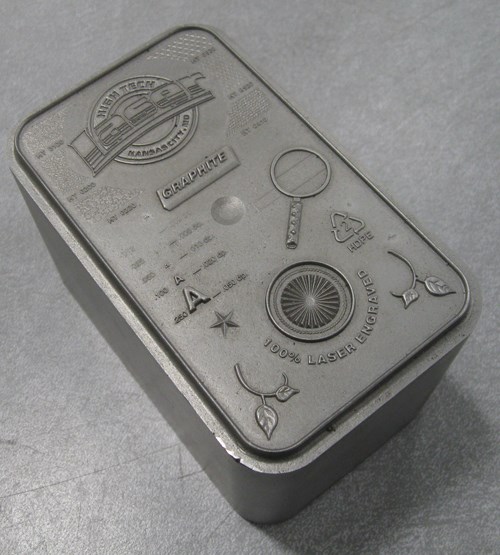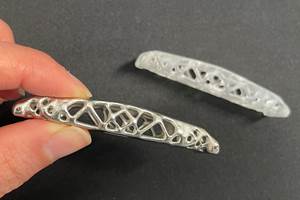Molten Spray Moldmaking
Rapid solidification creates mold and die tooling that is harder than heat treated components, within build times that are faster than machining.
[Editor's note: RSP Tooling, the company mentioned in the article below, no longer has a license agreement related to the Rapid Solidification Process (RSP). Premier Technology (www.ptius.com) now has a license agreement with Idaho National Laboratory related to RSP. A representative of Premier Technology told me the company's aim is to develop and sell machinery for producing large tooling and dies with this technology, but the timeframe for achieving this is unknown. Therefore, the article below is presented as information on an additive manufacturing approach that is likely to be available in the future. —PZ]
Because additive manufacturing processes are not affected by geometric detail, they ought to be ideal for making molds and dies. The complex features of these parts that slow down machining do not have to affect the speed of a process that builds parts layer by layer. However, size is a problem. Equipment for building additive metal parts is typically much more expensive than comparably sized CNC machine tools. Cost, among other factors, prevents additive equipment from scaling up to the size of a large mold or die.
Related Content
DMG MORI: Build Plate “Pucks” Cut Postprocessing Time by 80%
For spinal implants and other small 3D printed parts made through laser powder bed fusion, separate clampable units resting within the build plate provide for easy transfer to a CNC lathe.
Read MoreHow Electroplating Works for Polymer 3D Printed Parts
Baltimore-based RePliForm specializes in electroplating of 3D printed polymer parts for functional applications. This video explores how the process works, and potential benefits and uses for this technique.
Read MoreCopper, New Metal Printing Processes, Upgrades Based on Software and More from Formnext 2023: AM Radio #46
Formnext 2023 showed that additive manufacturing may be maturing, but it is certainly not stagnant. In this episode, we dive into observations around technology enhancements, new processes and materials, robots, sustainability and more trends from the show.
Read MorePossibilities From Electroplating 3D Printed Plastic Parts
Adding layers of nickel or copper to 3D printed polymer can impart desired properties such as electrical conductivity, EMI shielding, abrasion resistance and improved strength — approaching and even exceeding 3D printed metal, according to RePliForm.
Read MoreRead Next
Postprocessing Steps and Costs for Metal 3D Printing
When your metal part is done 3D printing, you just pull it out of the machine and start using it, right? Not exactly.
Read MoreBike Manufacturer Uses Additive Manufacturing to Create Lighter, More Complex, Customized Parts
Titanium bike frame manufacturer Hanglun Technology mixes precision casting with 3D printing to create bikes that offer increased speed and reduced turbulence during long-distance rides, offering a smoother, faster and more efficient cycling experience.
Read MoreProfilometry-Based Indentation Plastometry (PIP) as an Alternative to Standard Tensile Testing
UK-based Plastometrex offers a benchtop testing device utilizing PIP to quickly and easily analyze the yield strength, tensile strength and uniform elongation of samples and even printed parts. The solution is particularly useful for additive manufacturing.
Read More




















